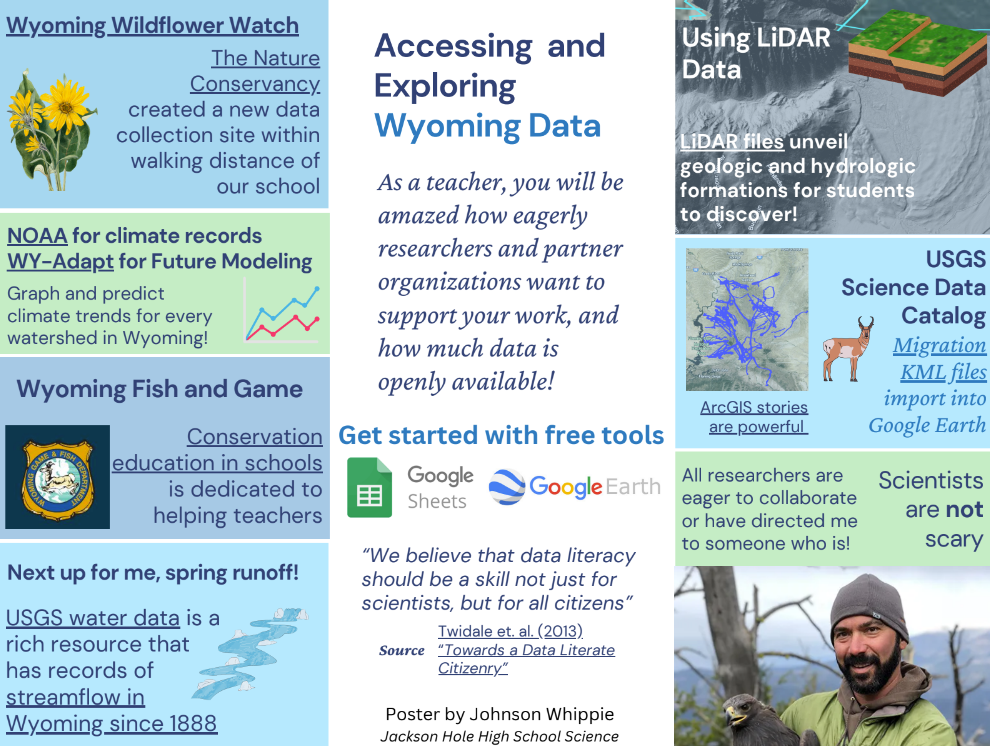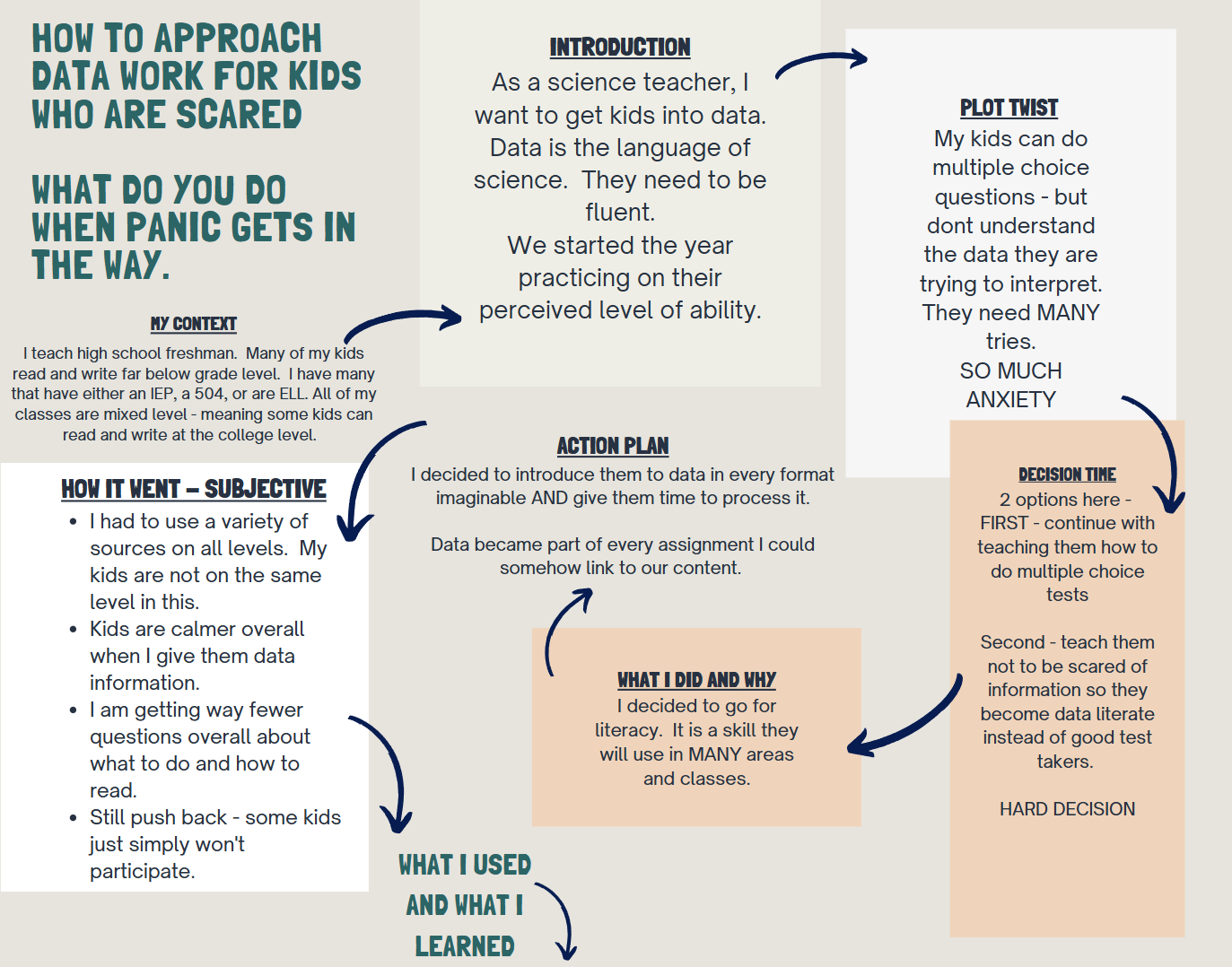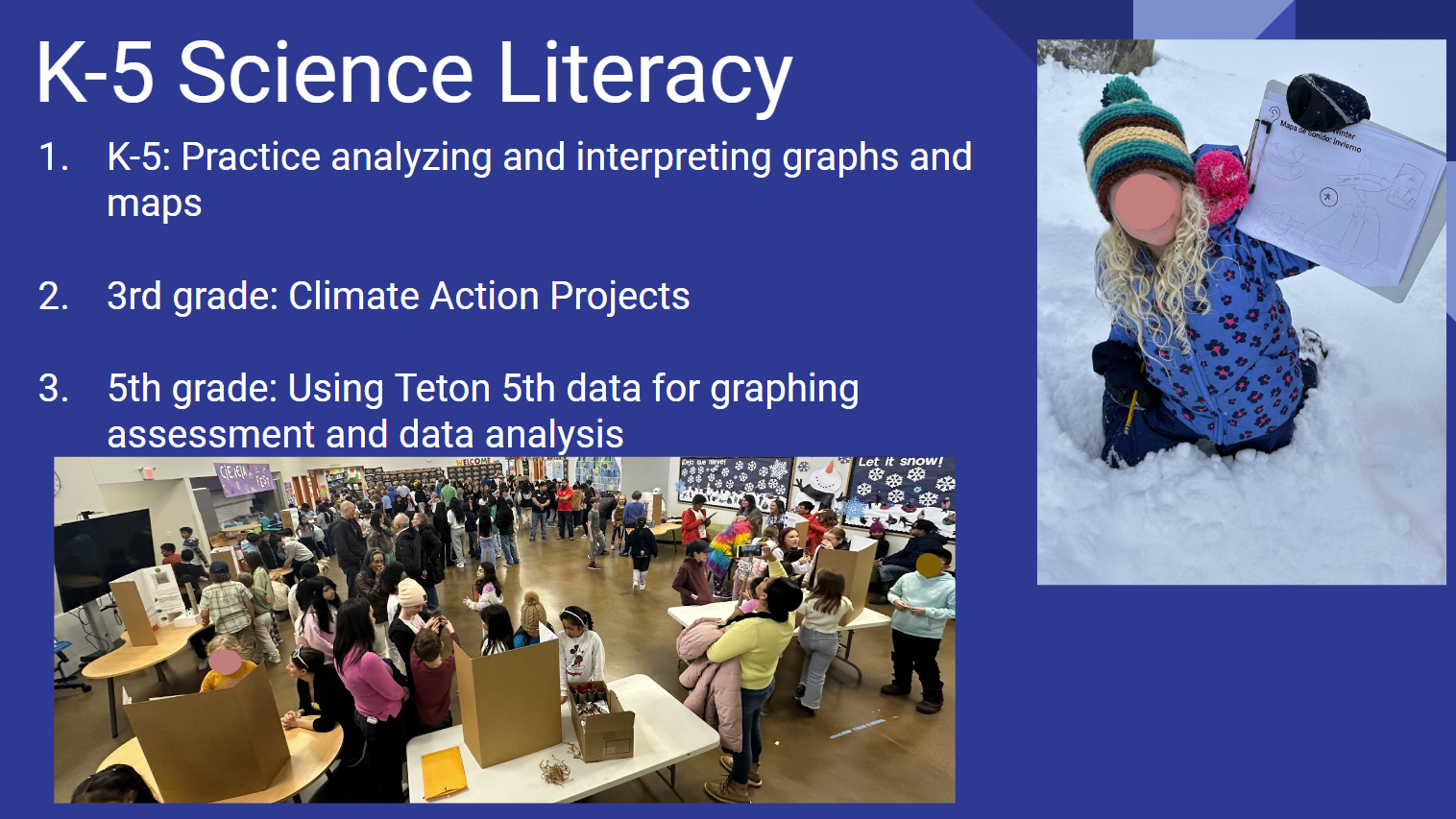Johnson Whippie’s project focuses on empowering teachers and students to access and explore publicly available data related to Wyoming’s natural environment. By utilizing free tools like Google Earth, USGS datasets, and NOAA records, students can engage in hands-on learning that deepens their understanding of local ecosystems and climate trends.
Key Resources for Data Exploration
This project highlights several important resources that teachers can use to introduce students to data analysis and visualization:
- Wyoming Wildflower Watch: A Nature Conservancy data collection site near Jackson Hole High School allows students to observe and record wildflower data.
- NOAA for Climate Records and WY-Adapt: Provides students with the tools to graph and predict climate trends for Wyoming’s watersheds, helping them understand local impacts of global climate change.
- Wyoming Fish and Game: Conservation education programs in schools provide hands-on learning opportunities, supporting data literacy through wildlife monitoring and habitat studies.
- USGS Water Data: This rich resource provides records of streamflow in Wyoming dating back to 1888, offering an excellent data set for students to analyze water patterns and runoff events.
- LiDAR Data: LiDAR files enable students to explore geologic and hydrologic formations in Wyoming, helping them uncover hidden features of the landscape.
Free Tools for Data Visualization
Teachers can make use of free, accessible tools to help students visualize and interact with data:
- Google Earth: Allows students to visualize geographic data, create maps, and explore Wyoming’s diverse landscapes.
- Google Sheets: Students can input, organize, and graph data, making it easier to analyze trends and present findings.
Key Takeaways for Teachers
Johnson emphasizes that scientists are eager to collaborate with educators and provide students with access to valuable data. Data literacy is an essent



